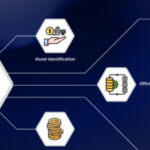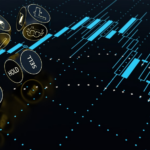About Radiant
Radiant is a revolutionary network designed to solve the problems with all existing blockchains in terms of scale, parallelism and Turing Complete programming. Radiant is a peer-to-peer digital asset system that enables direct exchange of value without going through a central party. Similarly to Bitcoin, the Radiant network requires minimal structure, and timestamps transactions into an ongoing hash-based chain of proof-of-work (SHA512/256).
| Deliq | Facts |
|---|---|
| Defi Coin Name | Radiant |
| Short Name | RXD |
| Total Supply | 7,331,440,970 RXD |
| Circulating supply | 7,331,440,970 RXD |
| Chat Option | Click Here To Visit Compound Chat |
| Official Website | Click Here To Visit |
Who created Radiant?
Radiant was created and bootstrapped as a community service by a tiny group of people who wanted a stable blockchain. The initiative was forged from the desire to have a scalable, unbounded blockchain that has all the best abilities between the major blockchains such as Bitcoin, Ethereum, Solana, Cardano and more.
Mission & Values
The primary vision: unite the fragmented liquidity across multiple money markets and chains under one safe, user-friendly, and capital-efficient omnichain protocol. The mission, consequently, is to leverage the resources in the Radiant DAO to execute that vision.
Analysis of all the money markets concluded that Geist Finance showed the most promise in the ability to bootstrap liquidity quickly–they raised ~$10bn TVL in less than two weeks. In addition, their protocol also provided stability and security of the Aave lending pool framework.
Leveraging the Geist codebase provides a great foundation for the dev team to implement cross-chain functionality via the LayerZero communications protocol, as popularized by Stargate.
How It Works
Lock $RDNT liquidity
Receive revenue from interest and flash loan fees.
Access boosted emissions
Locked liquidity activates lending and borrowing RDNT emissions.
Accumulate tokens
Paid in blue chip assets such as BTC, ETH, BNB and stablecoins.
Is there an Initial Coin Offering (ICO) for Radiant?
There was never any public or private fundraising, no Initial Coin Offering (ICO), no securities offering, no VC, and no crowdfunding of any type. The network was fairly bootstrapped similar to Bitcoin using pure proof-of-work from block height 0 and units of Radiant are emitted to the miners for energy expended according to the network’s consensus policy. Anyone may participate and earn on the network by contributing computing power, similarly to Bitcoin itself.
Who is responsible for the Radiant network?
Radiant uses peer-to-peer technology to operate with no central authority; managing transactions and the issuing of Radiant units is Radiant is open-source; its design is public, nobody owns or controls Radiant and everyone can take part.
RDNT Token
$RDNT, an OFT-20, is Radiant’s native utility token. Layer Zero Labs’ omnichain fungible token (OFT) interoperability solution enables native, cross-chain token transfers.
As voted in by Governance Proposal RFP-4, $RDNT emissions incentivize ecosystem participants to provide utility to the platform as dynamic liquidity providers (dLP).
Only users with locked dLP (liquidity tokens) activate eligibility for RDNT emissions on their deposits or borrows.
Additionally, dLP’s share in the utility of Platform Fees is captured in blue-chip assets such as Bitcoin, Ethereum, BNB, and stablecoins from borrowers paying loan interest, flash loans, and liquidation fees.
Through decentralized discussions, voting, and governance, the Radiant DAO has and always will dictate the decisions, and, ultimately, the vision of the Radiant ecosystem.
Work with the Radiant DAO
Radiant has already accomplished its zero-to-one goal of becoming the #1 cross-chain money market, with $350M+ in TVD, 30,000+ users, and $7.5M in protocol fees generated from cross-chain borrower interest.
Now, the DAO is seeking more A-players to help achieve its ultimate goal: Onboard the next 100 million users into DeFi by becoming the “Central Nexus” of DeFi – a “one-stop-shop” to access liquidity, get loans, earn a yield, and safely/seamlessly get leverage on dozens of assets (from GLP to curve stable LPs) across all chains.
Supernova Labs is committed to fostering a diverse and inclusive workplace. Supernova Labs is an equal opportunity employer and does not discriminate based on race, national origin, religion, gender, gender identity, sexual orientation, marital status, protected veteran status, disability, age, or any other legally protected status.
Radiant DAO Roadmap

Radiant Conclusion
Radiant represents a remarkable and revolutionary advancement in blockchain technology. It was specifically created to address some of the most significant challenges associated with existing blockchains, including issues related to scale, parallelism and programming capabilities.
Radiant stands out among digital asset systems by its commitment to decentralization, much like Bitcoin. By operating as a peer-to-peer digital asset system, Radiant facilitates value exchange directly among participants without intermediaries or central authorities – not only providing additional security measures but also encouraging greater financial inclusion and autonomy.
Radiant’s approach to maintaining its blockchain is impressive. By employing a proof-of-work mechanism such as SHA512/256, they ensure the integrity and immutability of transaction history – adding transparency and trust that are vital in any digital asset system.
Radiant FAQ
What is Radiant Capital?
The aims to be a “one-stop shop” money market, where users can deposit & borrow assets across multiple chains, seamlessly. The Radiant DAO utilizes the native utility token, $RDNT. By interacting and providing utility to the platform, users can capture the added value from the communities’ engagement through the native utility token $RDNT from borrowers and platform fees
Was there a seed round, presale or VC investment?
Funding for Radiant was bootstrapped entirely by the core contributors. All expenses have been paid out-of-pocket: development, multiple audits, marketing, salaries etc. There was no private sale, IDO, or VC involvement, which aligns with our ethos of decentralization with no bias.
Why is my health factor declining on borrowed assets?
Borrowed assets accrue interest that is paid from deposited collateral. Over time, this may lower one’s health factor. It is recommended to monitor your health factor and ensure it stays above 1. Deposit more funds or repay loans to increase your health factor and avoid liquidation
What is the difference between vesting and locking RDNT?
RDNT emissions from lending and borrowing must undergo a 90-day vesting process. Users must actively initiate the vesting period in the “Manage Radiant” section. Users can claim their vested RDNT early for a 25-90% exit penalty at any point during the vesting process. Remember that you can not partially exit early– all currently vesting RDNT will be withdrawn with their respective exit penalties applied. Locked RDNT liquidity providers receive 60% of protocol fees and cannot be unlocked until the locking period has ended.








